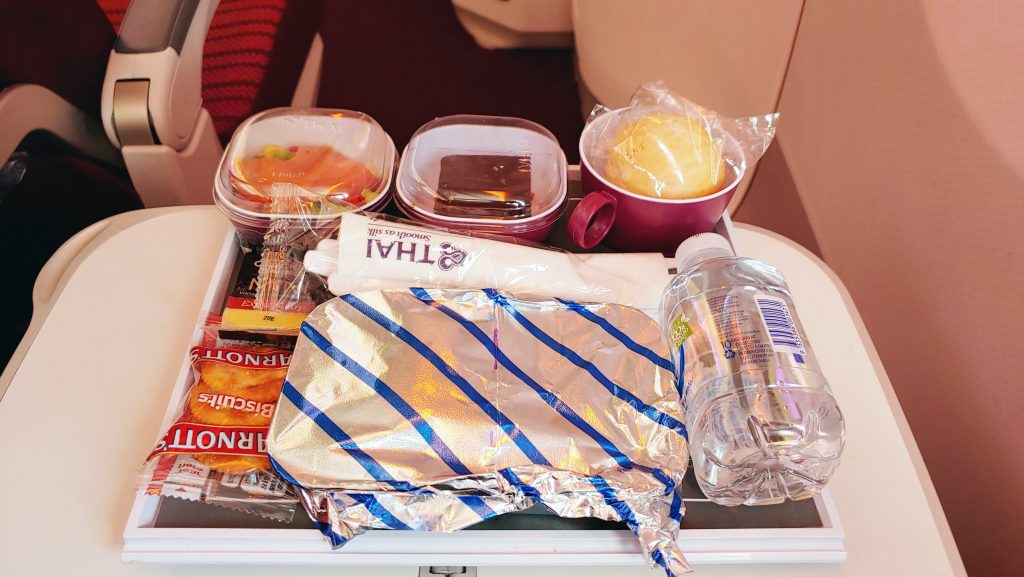Intro
Flying Thai Airways economy and wondering if the food’s actually good?
Here’s the key – always order the Thai option, not the Western dishes.
Thai flavours work better at altitude because the spices and ingredients hold up when your taste buds are dulled at 35,000 feet.
I tested this across two routes to see if their economy food game is still solid.
Here’s what you’re actually getting in economy on each route.
Melbourne to Bangkok
The 8.5-hour flight provided two meal services, while many airlines reduce service to single meals or minimal snacks on similar routes.

The first meal was served 90 minutes after takeoff. I selected the curry option, which included smoked salmon and a vegetable salad.



The chicken curry had a lovely spice and flavour, accompanied by fluffy rice in generous portions.
Dessert consisted of a chocolate mousse cake with biscuit crumbs, accompanied by cheese and crackers.

The quality demonstrated Thai Airways’ focus on their traditional dishes over Western alternatives.
The second meal arrived 1.5 hours before landing: chicken with beans and rice, with no menu choice offered.

The portion was substantial and included pre-packaged fruit, almonds, and a cookie.
While less refined than the first service, it exceeded the basic offerings typically provided by other carriers on similar routes.
Bangkok to Paris
I deliberately ordered the Western breakfast instead of a Thai dish.
The meal consisted of a frittata served with sausage, roasted potatoes, steamed broccoli, and fresh tomato.


The food was good, cooked well, and the vegetables retained their texture; portion sizing was also appropriate.
However, the flavours were muted and lacked the complexity that makes Thai Airways’ traditional offerings stand out at altitude.
This comparison reinforced why the Thai menu options consistently perform better.
The spice levels, herb combinations, and ingredient profiles in Thai dishes are specifically designed to maintain their impact when taste perception is diminished at cruising altitude.
The Western breakfast proved adequate but unremarkable.
Conclusion
Thai Airways’ economy delivers consistent meal service quality when passengers make informed menu choices.
The airline offers two meal services on long-haul routes, while many competitors reduce their offerings to single meals or minimal snacks.
The key to maximising the dining experience is selecting Thai menu options over Western alternatives.
Thai dishes utilise spice levels and ingredient combinations that maintain their flavour profiles at altitude, while Western options often taste muted in the cabin environment.
Portion sizes remain generous across both services, and the airline maintains traditional meal service standards despite industry-wide cost reduction trends.


